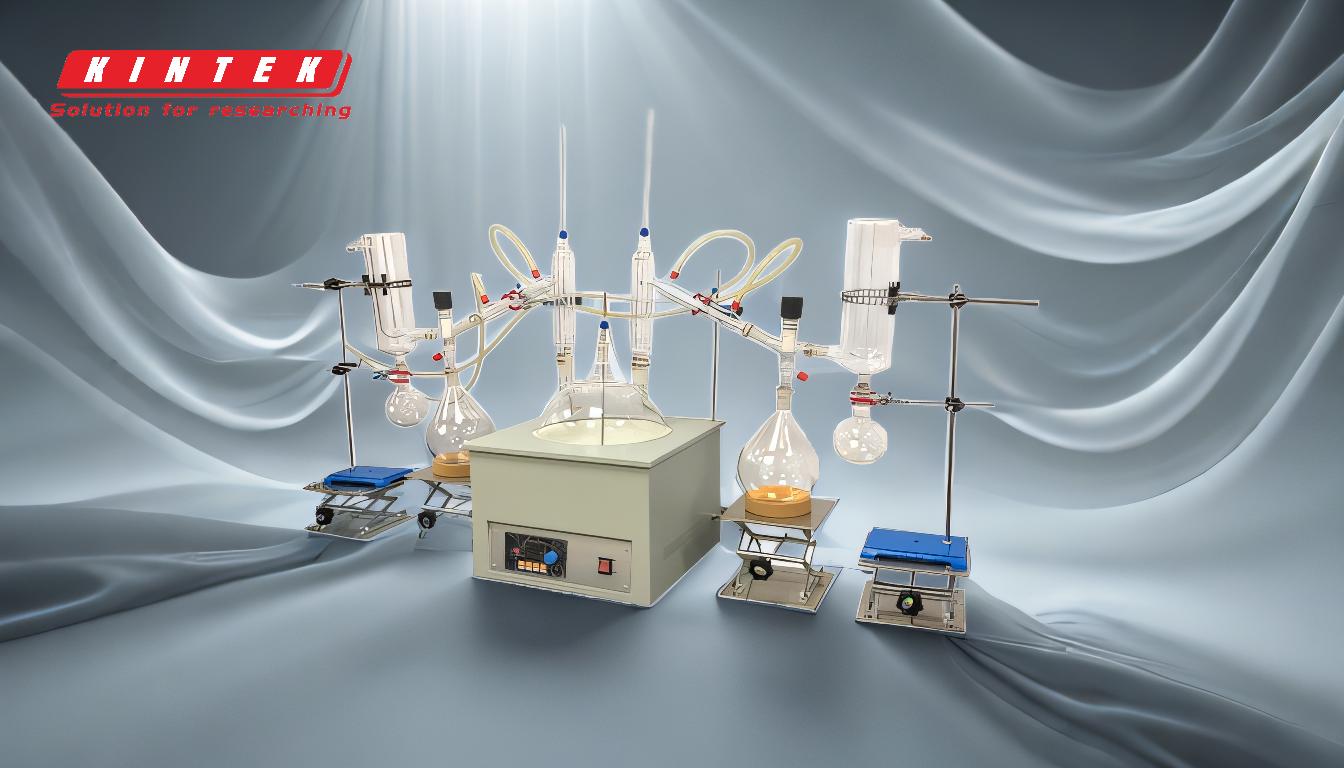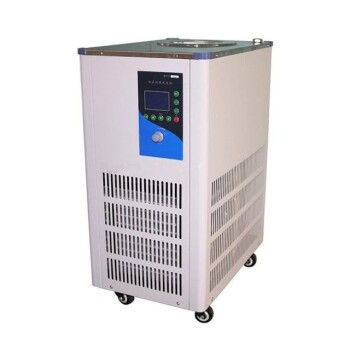Setting up a short-path distillation system involves a series of precise steps to ensure efficient separation and collection of volatile components from a mixture. The process requires careful preparation of materials, proper assembly of equipment, and meticulous monitoring of temperature and vacuum levels. Below is a detailed guide to setting up a short-path distillation system, broken down into key steps and considerations.
Key Points Explained:

-
Preparation of Materials
- Winterization and Decarboxylation: Before distillation, the material (e.g., CBD oil) must be winterized and decarboxylated. Winterization removes fats and waxes, while decarboxylation activates the desired compounds.
- Loading the Material: Transfer the prepared material into the round-bottom flask, ensuring it is clean and free of contaminants.
-
Assembly of Glassware
- Securing Connections: Assemble the glassware, including the boiling flask, condenser, and receiving flask. Apply vacuum grease to all joints to ensure airtight seals.
- Insulation: If using insulation rope, wrap it around the boiling flask and the bottom quarter of the distillation head, leaving the Vigreux column visible for observation.
-
Setting Up the Cooling System
- Chiller Setup: Connect the heater/chiller to the condenser and jacketed receiver. Set the chiller temperature to 50°C to ensure proper condensation of vapors.
- Cold Trap: Fill the cold trap with dry ice and alcohol, and place the receiving flask in a dish with dry ice to prevent vacuum boiling.
-
Vacuum System Setup
- Vacuum Pump: Connect the vacuum pump to the manifold and ensure all valves are open. Allow the system to reach a full vacuum (<50 millitorr).
- Monitoring Pressure: Use a vacuum gauge to monitor the pressure throughout the process.
-
Temperature Control
- Heating Mantle: Set the heating mantle to an initial temperature of 45-60°C. Gradually increase the temperature as needed, avoiding over-boiling.
- Thermometer Probe: Insert the thermometer probe into the distillation head to monitor the temperature of the vapors.
-
Stirring and Rotation
- Stirring: Turn on the stirrer and set it to approximately 200 RPM to ensure even heating and prevent localized overheating.
- Film Scraper: If using a film scraper, ensure it rotates evenly and continuously, and listen for any unusual noises.
-
Monitoring and Adjustments
- Observation: Monitor the distillation process closely, watching for the formation of vapors and the collection of fractions in the receiving flask.
- Adjustments: If little to no reaction occurs, slightly increase the heating mantle temperature or adjust the vacuum level.
-
Post-Distillation Steps
- Cooling Down: After distillation, allow the system to cool down gradually.
- Shutdown: Turn off the vacuum pump, heating mantle, and chiller. Clean the glassware and equipment thoroughly.
Detailed Explanation:
-
Preparation of Materials
- Winterization involves dissolving the material in ethanol, freezing it, and filtering out the fats and waxes. Decarboxylation is achieved by heating the material to activate cannabinoids or other compounds. These steps are crucial for achieving a clean and effective distillation.
-
Assembly of Glassware
- Proper assembly ensures a leak-free system, which is essential for maintaining vacuum integrity. Greasing the joints prevents air leaks and makes disassembly easier after the process.
-
Setting Up the Cooling System
- The chiller maintains the condenser at a low temperature, ensuring efficient condensation of vapors. The cold trap prevents volatile components from entering the vacuum pump, protecting it from damage.
-
Vacuum System Setup
- A strong vacuum reduces the boiling point of the material, allowing distillation at lower temperatures. This is particularly important for heat-sensitive compounds.
-
Temperature Control
- Gradual heating prevents thermal degradation of the material. The thermometer probe provides real-time feedback, allowing precise control over the distillation process.
-
Stirring and Rotation
- Stirring ensures uniform heat distribution, while the film scraper (if used) prevents the formation of hot spots and improves evaporation efficiency.
-
Monitoring and Adjustments
- Close observation helps identify issues such as over-boiling or incomplete distillation. Adjustments to temperature and vacuum levels can optimize the process.
-
Post-Distillation Steps
- Proper cooling and shutdown procedures prevent damage to the equipment and ensure safety. Cleaning the glassware maintains its integrity for future use.
By following these steps, you can set up a short-path distillation system effectively, ensuring high-quality separation and collection of volatile components.
Summary Table:
| Step | Key Actions |
|---|---|
| 1. Preparation | Winterize and decarboxylate material; load into a clean round-bottom flask. |
| 2. Assembly | Assemble glassware; apply vacuum grease to joints; insulate as needed. |
| 3. Cooling System | Connect chiller and cold trap; set chiller to 50°C; use dry ice for cold trap. |
| 4. Vacuum System | Connect vacuum pump; monitor pressure (<50 millitorr). |
| 5. Temperature Control | Set heating mantle to 45-60°C; monitor vapors with thermometer probe. |
| 6. Stirring | Use stirrer at 200 RPM; ensure film scraper rotates evenly. |
| 7. Monitoring | Observe vapors and fractions; adjust temperature or vacuum as needed. |
| 8. Shutdown | Cool down system; clean glassware and equipment thoroughly. |
Ready to set up your short-path distillation system? Contact our experts today for personalized guidance!




















